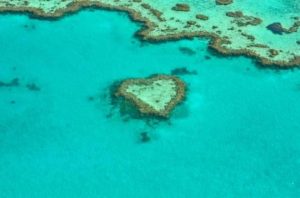
NASA’s Jet Propulsion Laboratory has announced to begin COral Reef Airborne Laboratory (CORAL) mission to investigate the health of the Great Barrier Reef in Australia. This mission has been designed to provide a better understanding of the ecologically sensitive coral reefs worldwide.
The Great Barrier Reef lies in the Coral Sea off Queensland, and is about 1,400 miles long. It encompasses more than 2,900 individual reefs and covers an area of about 133,000 square miles. According to recent studies, this reef is now on the verge of dying due to effects of global warming and coral bleaching. Some reports say almost half of the reef’s corals have already vanished.
“CORAL offers the clearest, most extensive picture to date of the condition of a large portion of the world’s coral reefs,” said CORAL Principal Investigator Eric Hochberg of the Bermuda Institute of Ocean Sciences (BIOS), Ferry Reach, St. George’s, Bermuda.
“This new understanding of reef condition and function will allow scientists to better predict the future of this global ecosystem and provide policymakers with better information for decisions regarding resource management.”
The CORAL mission will run for three years. During the mission, scientists will carry out aerial surveys using Portable Remote Imaging Spectrometer (PRISM) installed on modified Tempus Solutions Gulfstream IV aircraft. PRISM will peer through the ocean’s surface and will generate high-resolution images.
The advanced PRISM technology has been developed by NASA’s Jet Propulsion Laboratory, Pasadena, California.
“PRISM builds on an extensive legacy of JPL spectrometers that have successfully operated for NASA and non-NASA missions,” said Michelle Gierach, NASA CORAL project scientist at JPL.
“It provides the coral reef science community with high-quality oceanographic imagery at the accuracy, range, resolution, signal-to-noise ratio, sensitivity and uniformity needed to answer key questions about coral reef condition. PRISM data will be analyzed against data for 10 key biological and environmental factors affecting coral reef ecosystems, acquired from pre-existing data sources.”
In Australia, NASA will survey six sections of the reef, from the Capricorn-Bunker Group to Torres Strait. The Lizard Island Research Station and Heron Island Research Station will help NASA by providing in-water validation activities. The mission will also survey reef systems in the main Hawaiian Islands, the Mariana Islands and Palau next year.
